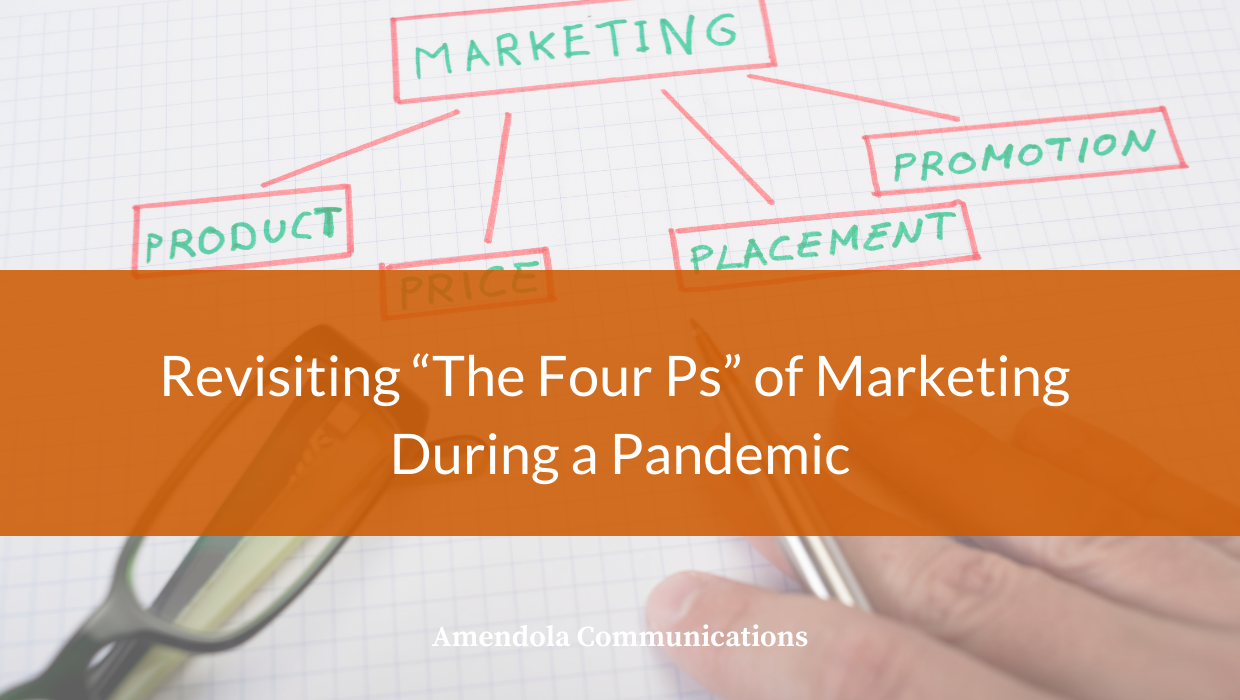Whenever asked to come up with a marketing plan, many people refer back to the “The Four Ps of Marketing” and use them as the basic foundation to develop an integrated strategy.
During the COVID-19 pandemic, a lot of healthcare and health IT companies have had to totally rethink the four Ps—whether they know it or not. And, they’ve had to do this as fast as possible while trying to save lives—of frontline workers and infected patients—while remaining relevant and profitable.
Here’s an example. Currently all eyes are on the biopharma industry to see how quickly they can develop a vaccine that will effectively stop—and hopefully eradicate—the coronavirus.
- The “P”roduct here is the vaccine, and there are many companies testing theirs to see which offer the best and safest results.
- But have you also noticed a lot of the “P”romotions that these companies have been making in the national news? So far, none of them have been paying for these promotions—and that’s an important point of clarification—not all promotions are paid.
- There are also a lot of national arguments on the “P”lacements of the vaccines. How will the vaccine be distributed and who will be first in line to receive it? How will they know it’s available and where to get it?
- And of course, we’re also hearing a lot or rumblings about the “P”rice of the vaccine. Will it really be free (someone has to pay for it) or will there be a hefty cost when people pull up their shirt sleeves?
Because we’re in a pandemic, the whole healthcare industry has had to deal with its effects on their individual products and services. Here’s a recap of a few observations of what’s been happening.
Product
Because of COVID-19, many—if not all—health IT companies have had to take a very hard look at their products and solutions and how they can help health workers deal with and provide care to those in need.
Some of the products are back-end solutions that integrate with technologies such as EHRs—to provide faster service and track results. Certain companies may deal more directly with healthcare coordination or how data is being used and sent, while others may provide community-based services to those who are most vulnerable. And as mentioned above, many are dealing with therapeutics that help in delivering care to those affected with the virus.
Placement
Directly related to the product or solution is where and how it will be used. This will have an effect on how it will be marketed and determine the channels for those efforts.
Right now, in healthcare, certain products (think thermometers, COVID-19 tests, ventilators, etc.) are moving very quickly all around the world. But it takes sophisticated logistical operations to get equipment where it needs to be.
But this also affects how the public is informed and how the product gets used. For example, we’ve heard several instances of how someone may be feeling symptoms related to the virus but has absolutely no idea about where to go to get a test.
Promotions
This is probably the most confusing and difficult of The Four Ps to navigate during the pandemic. With so many companies wanting—and deserving—earned media placements, many news outlets are overwhelmed with requests. Having the right relationships with the media, and offering them true, compelling and factual stories is key to making sure products and solutions receive the attention they deserve.
Paid promotions are an obvious possibility, but with so much information “out there” companies will need to be very analytical, specific and targeted to reach their audiences and cut through the noise. Social media is also a good option to promote a product or solution, but knowing the right channel and frequency are keys to getting attention, followers, likes and shares.
Price
The most compelling of the Four Ps to the consumer of a product or service is the price! Remember all the fears about toilet paper and hand sanitizer shortages, and efforts to control supply and demand?
Many healthcare and health IT companies—in order to meet needs and create a common good for care delivery—provided their solutions for free. But they can’t do this forever because they’ll go broke. And, in an unstable economy, pricing dilemmas will surely consume many of these companies’ time—while trying to maintain and salvage relationships with clients and customers.
As has been demonstrated time and time again, The Four Ps of Marketing create the formula for a winning strategy and a profitable company. During the COVID-19 pandemic, many companies have had to revisit all the Ps to make sure their product or solution gets where it needs to be or does what it can do for health workers.
Products, places, promotions and price are now more relevant to healthcare delivery—and saving people’s lives—than they have ever been before.
